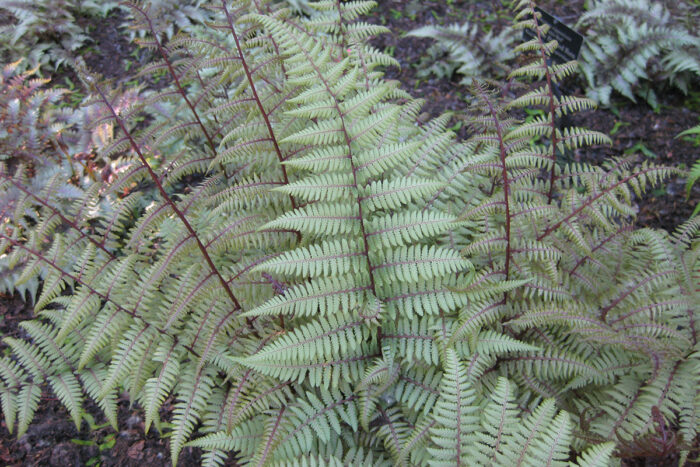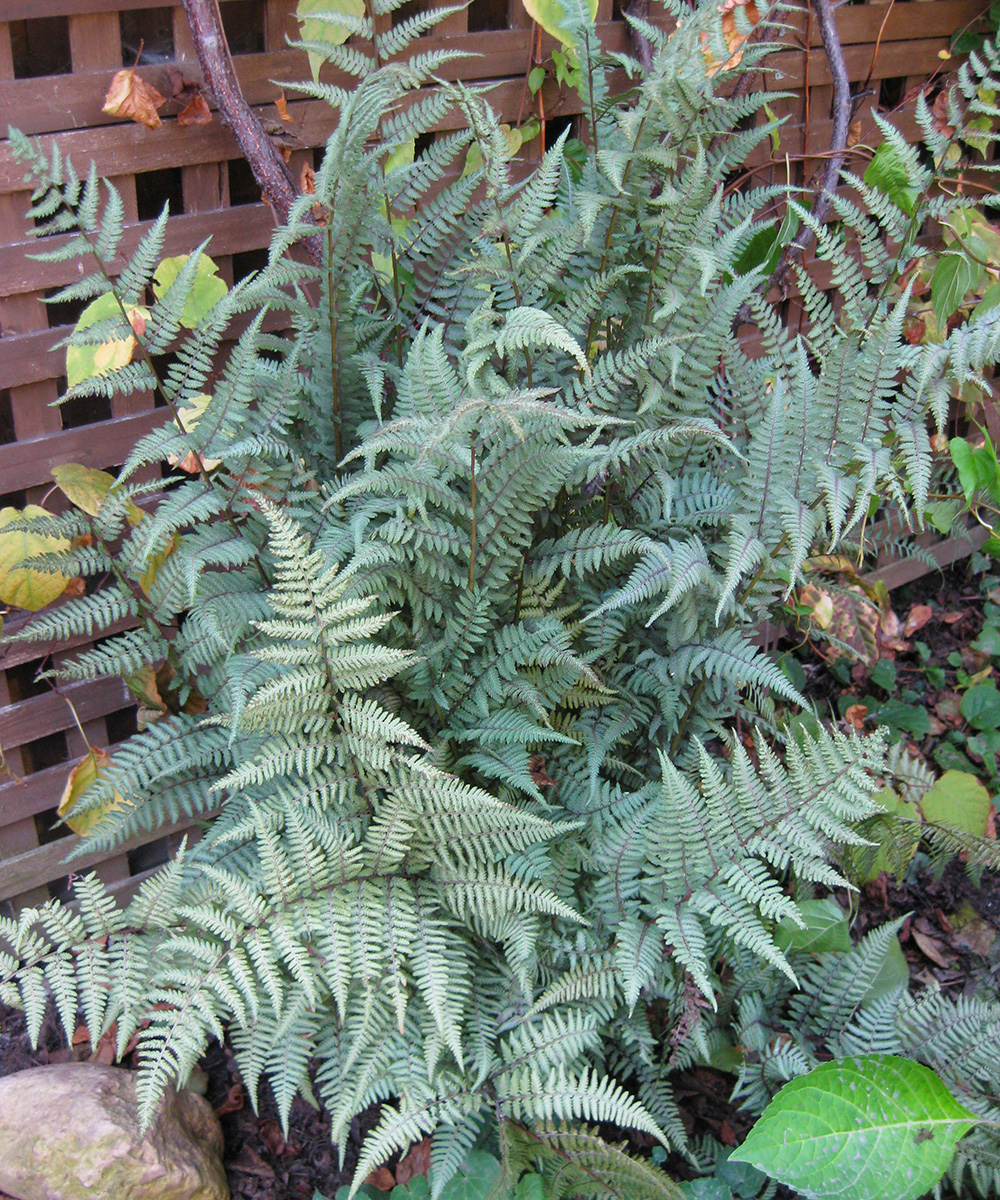
I’ve grown many ferns over the years, and I’m constantly enthralled anew every time I see ‘Ghost’ lady fern (Athyrium ‘Ghost’, Zones 3–8) in the shade garden. Described as well-mannered, this easy-to-grow hybrid showcases the best features of its parents. The silvery fronds are a contribution from their Japanese painted fern (Athyrium niponicum var. pictum, Zones 3–8) parent and readily glow (“ghostly”) in partly shaded locations. The tall, arching, vase-shaped architecture of this fern is from the lady fern (A. filix-femina, Zones 4–8) parent. While there is a wide range of traditional Japanese painted fern selections available that are suitable for the Midwest garden, most are in the range of 15 inches tall or so. ‘Ghost’ lady fern brings the silver contribution along with exceptional texture at a greater height of 24 to 36 inches at maturity. The lady fern parent also lends increased winter hardiness.
Tips for growing ‘Ghost’ lady fern

‘Ghost’ lady fern prefers moist, well-drained, and humus-rich soil, but it will tolerate brief periods of drought. Considered incredibly low maintenance, this fern requires full or partial shade, as a full-sun location will result in browning foliage into the summer. Deer and rabbits tend to leave this plant alone, and it is considered virtually pest and disease free. Damaged or dead fronds can be removed at any time, and division, if necessary, is best accomplished in spring. I am not the only fan of this hybrid. Its toughness and beauty helped garner an Award of Garden Merit from the Royal Horticultural Society.
What plants should you combine with ‘Ghost’ lady fern?
‘Ghost’ lady fern is absolutely indispensable in the shade garden, as the silver foliage adds illumination to darker spaces. That silvering, coupled with the texture and size of the fern, makes this selection quite valuable in compositions. Keep in mind that providing decent soil and ample moisture is essential for the success of this fern, and those conditions will additionally accommodate a wide range of classic neighbors, such as hostas (Hosta spp. and cvs., Zones 3–8), heucheras (Heuchera spp. and cvs., Zones 3–9), bleeding hearts (Dicentra and Lamprocapnos spp. and cvs. Zones 3–9), lungworts (Pulmonaria spp. and cvs., Zones 3–8), and ligularias (Ligularia spp. and cvs., Zones 4–8). I can’t think of another plant that won’t benefit from close proximity to this fabulous fern.
‘Ghost’ lady fern is impressive in masses and mixed borders
Groupings of ‘Ghost’ are amazingly impactful, as is the repetition of this plant throughout the shaded border. ‘Ghost’ is also a wonderful choice for containers. As with many Japanese painted ferns and their hybrids, the spring coloration differs from the summer coloration of this fern. In spring, ‘Ghost’ lady fern may exhibit more of an apple-green foliage color with hints of silver. The silvering intensifies into summer, and older specimens tend to have the best coloration.

While there are other interesting lady fern hybrids with the same parentage, ‘Ghost’ really knocks it out of the park. It is indeed an impactful, low-maintenance performer that won’t let you down.
—Mark Dwyer is the garden manager for the Edgerton Hospital Healing Garden in Edgerton, Wisconsin, and he operates Landscape Prescriptions by MD.


















Comments
Log in or create an account to post a comment.
Sign up Log in